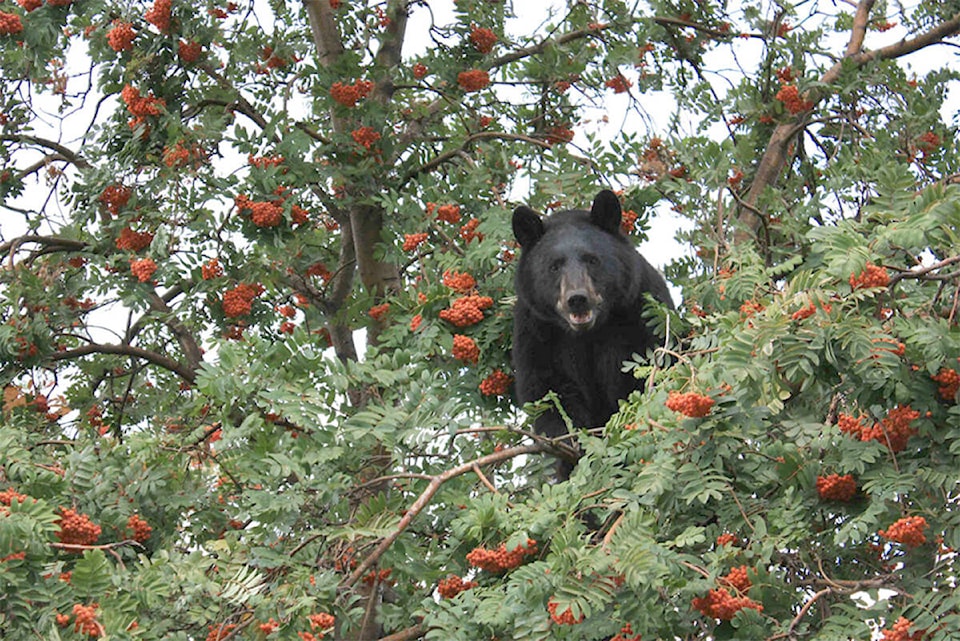Submitted by Luke Matheson and Kade Zahariuk
With outdoor recreation gaining more popularity each year, human-interactions with bears are on the rise. Bears are usually shy and reclusive animals and have little desire to interact with humans. With the rise of recreation in and around the West Kootenay, this leaves bears with no choice but to integrate with human activities. With these interactions, bear and human conflict are increasing within the Kootenays. It is crucial that the residents of Castlegar are educated and informed about the high number of sightings, how to prevent interactions as well as how to properly deal with them.
As many residents of Castlegar know, the backyard bear problem can get irritating as well as dangerous for both humans and bears. Bears are becoming more attracted to left out garbage, as well as fruit trees around the community. This is causing problems both for humans and bears. Not only can it be an annoying mess to wake up to, but it is also a risk for pets. Bears are adapting and taking advantage of this easy resource, and are starting to become nocturnal feeders, which is not natural behavior. To help mitigate conflicts between bears and humans, it is important for the community to understand proper bear awareness, and ethics.
If you encounter a bear, the first thing to do is stay calm and assess the situation and try to determine if the bear is a grizzly (Ursus arctos horribilis) or a black bear (Ursus americanus). In the instance of an encounter, back away slowly facing the bear’s direction and speak in a calm and firm tone that makes the bear aware of your presence; the more noise the better. Yelling or grabbing objects such as rocks or sticks and using them to make noise can also work well. In lots of cases, throwing objects at the bear can be very effective for scaring the bear.
Bear spray can be a very effective way to deal with bears, however there are certain occurrences when it becomes ineffective. For example, being aware of wind direction before you decide to pull the trigger is important, as the wind may blow the spray back onto you causing harm to you and making it ineffective in protecting you from the bear. For bear spray to be effective you can’t be too close or too far away — it is recommended that five meters is a safe distance to discharge the spray.
On a surprise encounter with a bear try to leave an escape route so it doesn’t feel boxed and forced to attack. Never run, you cannot outrun a bear, and the movement of running can excite the bear and lead to an attack. If you are close enough to a vehicle or building, try to seek shelter as quickly as you can. Climbing a tree can be a choice but is not always the safest option as black bears have short claws which are excellent for climbing. Grizzlies aren’t as proficient climbers as black bears, but they’ve been known to go after people who seek safety in a tree.
READ MORE: Help halt mad deer disease in the Kootenays
Bear-human encounters in the West Kootenays are on the rise. The Kootenays are home to both black and grizzly bears. It is important to know the differences in the behavior between the two bears. Grizzly bears range throughout the landscape while black bears prefer forested areas. Black bears often climb trees when they sense danger while grizzlies will face the danger if it is deemed a threat, meaning black bears tend to be less aggressive than grizzlies. Black bears are usually more tolerant of humans and often live nearby human settlements, whereas grizzlies tend to stay away from humans. Grizzlies can be easily identified by their shoulder hump, as well as their dish shaped face, and small ears. Black bears on the other hand, have a pointy nose and large rounded ears.
Even though most bears are shy and will flee when they come across people, aggressive encounters occasionally occur. One of the main causes of hostile confrontations is when the bear is surprised at a close range, especially when it is a female with young cubs. Often bears that are food-conditioned will lose their natural fear towards humans and become habituated and potentially become aggressive as well. Keeping your garbage locked and/or in a bear-resistant garbage can, will prevent them from accessing it. Keeping your garbage secure is the first step in reducing bears coming into our towns and cities.
With the popularity of outdoor recreation growing each year, so are the human-bear interactions. When bears are given access to human resources such as garbage, it makes for a quick and easy meal. After the meal, they become habituated and will stay around the area if they continue to have easy access to this resource. This plays a major role in the interactions we wish to subside. If everyone is proactive in educating themselves, it will decrease the likelihood of a negative interaction between bears and humans.
Kade Zahariuk and Luke Matheson are second year Recreation, Fish and Wildlife students at Castlegar’s Selkirk College.
